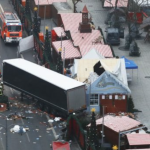Air strikes have become a daily occurrence for the people of Myanmar. Various data confirm that Moscow and Beijing continued military exports even after the February 2021 coup. Local militias respond by arming commercial drones.
Yangon () – The death toll from the Burmese coup junta bombardment of the village of Pa Zi Gyi in Sagaing has risen to at least 170 people, including dozens of civilians and children. This is one of the bloodiest events since the start of the civil war, but air raids have become something everyday in Myanmar since last year thanks to arms supplies from Russia and China, which violate international law.
After the civil coup on February 1, 2021 with which the army deposed the previous government led by Aung San Suu Kyi, Myanmar is fighting a part of the fragmented third world war that Pope Francis has repeatedly spoken of.
“The same types of weapons that are killing Ukrainians are also killing the Myanmar people,” Tom Andrews, special rapporteur on the situation of human rights in Myanmar, said in recent months. Last year, the official had submitted a report, titled “Enabling Atrocities: UN Member States’ Arms Transfers to the Myanmar Military” on the shipment of arms by UN member states to the Burmese junta starting in 2018, which showed that after the coup two years ago, China, Russia and Serbia (an ally of Moscow) continued to send weapons , which allows the junta to carry out attacks against the civilian population.
The report claims that as of September 2021, the Burmese Air Force possessed at least seven JF-17 aircraft manufactured and supplied with missiles by China, and in December of the same year, the military ordered and received four fighters and four military transport aircraft. According to data from the Stockholm International Peace Research Institute (SIPRI), which uses its own unit of measurement to assess arms transfers from one country to another, the value of what was shipped from China to Myanmar in 2022 was almost doubled compared to 2021.
But the Burmese junta’s main arms supplier remains the Russian Federation, an ally of the military for historical and economic reasons. The value of Russian exports to Myanmar in 2022 is more than double the value of Chinese exports in the same year, SIPRI data says. The independent organization Myanmar Witness, which conducted a study of army airstrikes in the last six months of 2022, said the most frequently sighted military aircraft during the investigation were Russian-made Mi-35 attack helicopters.
Moscow has repeatedly stressed the importance of closer military ties with Myanmar, assuring the Burmese military that it would fend off arms orders that had already been placed before February 2021. Two years ago in June, a Burmese delegation had traveled to Russia to follow the production process of the Panstir S-1 missile defense system. A few months later, in August, Moscow had announced that Myanmar, along with other countries, was part of an arms transfer agreement worth 2 billion euros, while in December the export of another six Yak-130 jets was authorized. . An export that satellite images continued to document throughout 2022, according to the report by Special Rapporteur Tom Andrews.
Most of the bombardments are concentrated against areas under the control of the ethnic armed organizations, the militias that were formed at the time of the country’s independence in 1948 and have continued to fight against the central government ever since. After the outbreak of the civil war, they allied with the People’s Defense Forces, the armed wing of the national unity government in exile, made up mostly of former deputies from the National League for Democracy, the party from which Aung San hails. Suukyi.
Unlike the military, the resistance uses homemade weapons, including commercial drones, which are ordered online or 3D-printed and then assembled. Resistance drone strikes remain sporadic and limited, but in some cases they have managed to provide significant support to ground troops. In at least one case, for example, the Burmese military was forced to take refuge in the forest to protect themselves from drone attacks by militias.











